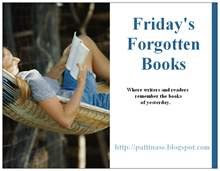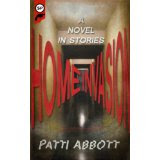We first saw the sign a few weeks ago. It was painted on the top of a building at Jefferson Avenue at Chalmers in Detroit. And it took us a while to get the link. The story below is from MODEL D. This project is on the corner of a particularly decimated section of Detroit, about three miles from us.
The idea began as a conversation between two young city builders on Detroit’s East Side. They wanted to know what it would take to bring a little retail life and vitality to the underutilized commercial strip at Jefferson and Chalmers, one of Detroit’s few intact retail corridors from the early part of the last century.
Less than six months later, five pop-up storefronts opened during Jefferson East Business Association’s annual Jazzin’ on Jefferson outdoor music festival. The retail spaces were activated with five unique designs in collaboration with the American Institute of Architects, Detroit Chapter, Urban Priorities Committee. They are open through July 6.
While the Jefferson pop-up project is a temporary experiment to showcase the neighborhood’s potential as a retail corridor, community response to the idea has been positive.
The other half of the equation is Naomi Beasley, a newly minted Master of Architecture graduate of University of Detroit-Mercy’s School of Architecture. "Naomi and I began talking in February about how we could work together to build a stronger sense of community by overcoming barriers like a lack of foot traffic and commercial density," Harrison says. "We thought it would be good to program several spaces at once that were clustered together with common design elements."
Beasley, poised and engaging, greets me as she sits on a comfortable cushioned bench in one of the pop-up spaces. The bench is fashioned out of wooden pallets and reclaimed lumber in Angela Foster’s Coffee and (_______), which had previously popped up in Detroit’s West Village last year.
"Every space utilizes the pallets for various elements – benches, walls, shelves – we salvaged as much material as we could," says Beasley, who designed one of the five pop-ups and coordinated the design process for the other four.
Two spaces artfully nestle next to Coffee and (_______) in the same building, and are accessible through a party wall, as well as from the street. Myra’s Sweet Tooth, purveyor of most delicious cakes, with a permanent location a few blocks away, has the front space. It is small, compartmentalized, multi-function, and designed to lend itself to other programming in the future. In the back, a show curated by Wyandotte’s River’s Edge Gallery is located in a much larger, raw space behind Myrna’s. Here, in what was once a liquor store not too long ago, artists Audrey Pongracz, Birgit Huttemann- Holz, and Buddy Morsello are featured, among others, in a gallery that feels like it has been part of the neighborhood for years.
As we walk out of Myra's, Harrison points up to a new handmade "Who is Jeff Chalmers?" sign atop the building.
"We’re also trying to brand the community through this process and they understand that efforts to build identity help," Harrison says, and we cross over to the south side of Jefferson, where wheat paste murals of musicians adorn a vacant storefront. "The property owners have been very supportive as well."
Of course it also helps that JEBA has laid so much of the groundwork already, taking the lead on façade improvements in the district over the years, and helping to support the redevelopment of anchor properties. The historic three story Chalmers Building, is one such example, which benefitted, in part, from a $7.5 million MSHDA brownfield tax credit to rehabilitate the building, including white boxing the ground floor retail spaces – an inglorious act which is so often is the difference between a small retailer opening or not.
On either side of the Chalmers Building's stately Jefferson entrance, Goodwells and D:hive make up the last two of the pop-up spaces.
D:hive heavily utilized the pallet theme to demarcate different zones in its "community development center," where Sweet Potato Sensations, Sister Pie, and Good Cakes and Bakes -- three recent graduates of D:hive’s entrepreneur training BUILD class -- join a display by Village of Fairview Historical Society, which tells the area's fascinating history of horse racing and automotive firsts. In D:hive, Beasley shows me the plywood floor. "We intentionally painted it white to give people a sense of activity, because they can see footprints," she says.
As we finally step next door into Goodwells Natural Foods Market, the one Beasley designed, I begin to get a sense of the group's accomplishment. Four weeks to design. Four weeks to build. Design was paramount to the process, and resulted in something of an instant, cohesive village. Though the project is temporary, it’s a blueprint for good city building.
I ask Beasley about the importance of design and what its inclusion meant to the success of the project. “This was an opportunity to realize something in real time,” she says. "You don’t get that opportunity very much as a young professional, because you are limited in the ways you are allowed to work."
In Goodwells, just as in the four other storefronts, it is mission accomplished. Beasley’s design is delightful, both modern and rustic, with playful shelves displaying food set in window frames. Exploded pallets come together as wainscoting for the walls. A yellow painted wooden door hangs delicately over seating, with holes for hanging light bulbs below – its simple beauty underscores what Harrison, Beasley and their team were able to pull off, to show that it could be done, and what the future may bring.
You still have a little time to experience this eastside pop-up experiment. Pop on over to Jefferson Chalmers for coffee, treats, art, good food, and culture, during June on Jefferson, now through July 6.
Francis Grunow writes about Detroit urbanism for Model D.
Subscribe to:
Post Comments (Atom)



















3 comments:
Patti - What a great idea to revive retail business! I love it when 'regular people' (i.e. not highly-paid politicians or CEOs) come up with creative solutions.
We have a $100 million casino being built in downtown Buffalo. I'm sure that's the Answer to Buffalo's problems.
Sounds rather ingenious.
Post a Comment